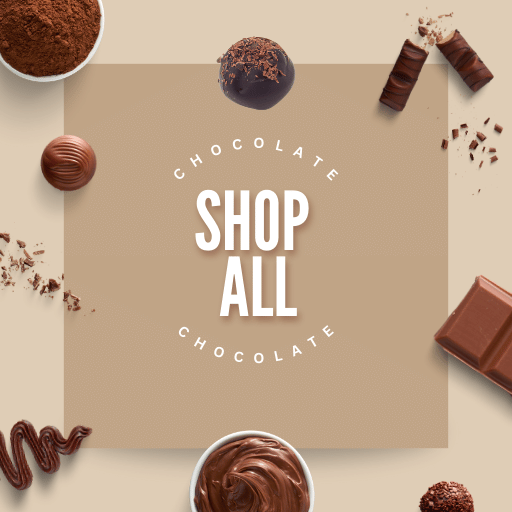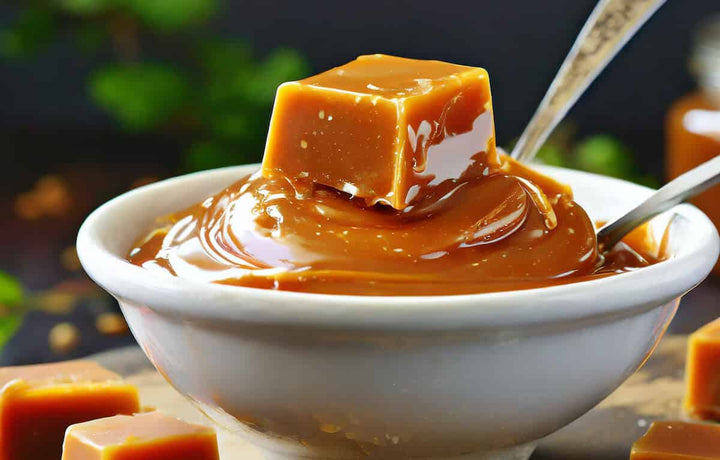A bonbon, a term that conjures images of elegance and indulgence, is a delightful confection that has captured the hearts and palates of sweet lovers around the globe.
Historically, bonbons have been associated with luxury and celebration, making them a favoured choice at festive occasions and a cherished gift among friends and family.
In this post, we will dive into the fascinating world of bonbons, exploring their origins, the diversity of their fillings, and their enduring appeal across cultures and generations.
What Are Bonbons?
Bonbons are a type of confectionery that are as diverse in their flavours as they are in their origins.
At their core, bonbons are small, sweet treats, usually coated in chocolate or a candy shell, with a variety of fillings that can range from fruit jellies, creams, and ganaches to nuts and liqueurs.
The word "bonbon" stems from the French term for "candy", derived from the word "bon", meaning "good".
This etymology reflects the treat's inherent appeal and the pleasure it brings to those who enjoy it.
The versatility of bonbons is remarkable, with their appearances and ingredients varying widely across different cultures and culinary traditions.
In many European countries, bonbons are synonymous with chocolate confections, elegantly crafted and often presented in exquisite assortments that are as pleasing to the eye as they are to the palate.
Meanwhile, in other regions, the term might refer to any small candy, showcasing the global adaptability and popularity of these sweet delights.
Historically, bonbons date back to the 17th century in France, where they were initially made as hard candies.
Over time, their production evolved with the advent of chocolate and other flavourings, leading to the sophisticated and varied confections we know today.
Bonbons have come to symbolise celebration and indulgence, often featured on festive occasions, used as thoughtful gifts, or enjoyed as a luxurious treat.
Related Post: What is Turkish Delight?

What Are Bonbons Made Of?
Bonbons are exquisite confectioneries made from a combination of a thin, tempered chocolate shell and various fillings.
The outer shell is carefully tempered from high-quality chocolate to achieve a glossy finish and a satisfying snap.
Inside, the fillings can range widely, including but not limited to creamy ganaches (chocolate mixed with cream), fruit purees, caramels, pralines (ground nuts mixed with sugar syrup), and sometimes liqueurs.
The choice of ingredients and the quality of chocolate used are crucial in determining the bonbons' flavour, texture, and overall quality.
How Are Bonbons Made?
Commercially, bonbons are made through a detailed process that includes designing and preparing moulds, tempering chocolate for the shells, filling them with various flavours, sealing them, and then cooling and unmoulding.
The bonbons are often decorated and undergo quality control before packaging.
This process blends traditional chocolatier techniques with modern technology to produce high-quality, visually appealing chocolates with diverse flavours.
How to Make Bonbons at Home?
Making bonbons at home is a rewarding process that allows you to explore your creativity with flavours and textures.
While it requires some patience and practice, especially when working with chocolate, the end result is well worth the effort.
Here’s a basic guide to making chocolate bonbons at home:
Ingredients:
- High-quality chocolate (dark, milk, or white) for tempering
- Your choice of filling (ganache, caramel, fruit purees, nut butters, etc.)
- Optional: Flavourings for the filling (vanilla extract, liqueurs, citrus zest, spices)
- Optional: Decorations (cocoa powder, nuts, edible glitter)
Equipment:
- Chocolate moulds
- Heat-proof bowls
- Silicone spatula
- Thermometer
- Piping bag (or a zip-lock bag with a corner cut off)
Steps:
1. Prepare Your Filling:
- Start by preparing your chosen filling. For ganache, heat cream and pour it over chopped chocolate, letting it sit before stirring smooth. Add any flavourings as desired. Let the ganache cool until it’s pipable but not runny.
2. Temper the Chocolate:
- Chop your chocolate finely. Melt two-thirds of the chocolate over a double boiler or in short bursts in the microwave, stirring frequently until it reaches 45-50°C (113-122°F) for dark chocolate or 40-45°C (104-113°F) for milk and white chocolate.
- Remove from heat and add the remaining third of chopped chocolate to cool it down, stirring until it reaches 31-32°C (88-90°F) for dark chocolate or 29-30°C (84-86°F) for milk and white chocolate. This process is called tempering, which ensures a shiny finish and a good snap.
3. Fill the Moulds:
- Pour the tempered chocolate into the moulds, filling them. Then, turn the mould upside down over your bowl of chocolate to pour out the excess, leaving a chocolate shell. Use a scraper or spatula to clean the top of the moulds. Let them set until hardened.
4. Add the Filling:
- Once the shells have set, pipe your filling into each cavity, leaving room at the top for the final layer of chocolate. Be careful not to overfill.
5. Seal the Bonbons:
- Re-temper the chocolate if necessary. Pour it over the filled moulds to seal the bonbons, scraping off any excess. Let them set completely, at room temperature or in the fridge.
6. Unmould and Decorate:
- Once set, gently tap the moulds on a surface to release the bonbons. If tempered correctly, they should come out easily with a shiny finish.
- Decorate your bonbons as desired. This can involve drizzling with chocolate, dusting with cocoa powder, or applying edible decorations.
Tips:
- Patience is Key: Tempering chocolate and working with fillings can be delicate processes. Take your time and enjoy the craft.
- Experiment with Flavours: Feel free to get creative with your fillings and decorations. The beauty of homemade bonbons is making them uniquely yours.
- Storing: Keep your bonbons in a cool, dry place. They can also be refrigerated, but be mindful of condensation which can affect their appearance.
Making bonbons at home is a fun and fulfilling way to delve into the world of chocolate making, allowing you to customise your creations to your taste preferences.

What is the History of Bonbons?
The history of bonbons is a sweet journey through time, tracing back to the 17th century in France.
The word "bonbon" originated from the French term "bon", meaning "good", a fitting name for these delightful treats.
Initially, bonbons were simple sugared almonds, a popular confection among the French aristocracy.
The process involved coating almonds in successive layers of sugar syrup, a technique known as dragée, which is still used in confectionery today.
As sugar became more widely available and culinary techniques evolved, the variety of bonbons expanded.
By the 18th century, bonbons included a broader range of sweets, such as fruit pastes, hard candies, and chocolates filled with various flavoured creams and ganaches.
These confections were a symbol of luxury and indulgence and became associated with celebrations, gifts, and social gatherings among the elite.
The introduction of chocolate into Europe, following the Spanish conquest of the Aztec Empire, revolutionised the confectionery world, including the development of bonbons.
Chocolate was initially consumed as a drink among the European aristocracy. Still, by the 19th century, with the advent of solid chocolate, chocolatiers began creating chocolate bonbons with exquisite fillings, further elevating their status as a luxury item.
The industrial revolution played a significant role in the democratisation of bonbons.
Advances in manufacturing and the mass production of sugar and chocolate made bonbons more accessible to the public.
This period saw the birth of many confectionery companies that are still beloved today.
In the 20th century, the innovation of confectionery techniques and the global exchange of culinary traditions contributed to the diversity of bonbons available worldwide.
Today, bonbons are celebrated globally, with each culture adding its unique twist, from the Belgian praline to the Brazilian brigadeiro.
The history of bonbons reflects the evolution of confectionery art, from simple sugared nuts to complex chocolate creations.
Bonbons have transcended their aristocratic origins to become a cherished treat enjoyed by people from all walks of life, symbolising the universal joy of indulgence and the timeless appeal of sweets.

Are Chocolate Bonbons a Thing?
Chocolate bonbons are celebrated as a refined and exquisite form of confectionery worldwide.
These delightful treats are crafted with a shell of tempered chocolate that encases a variety of fillings, ranging from rich ganaches and smooth creams to fruit purees, nuts, and liqueurs.
The art of making chocolate bonbons involves precision and creativity, allowing chocolatiers to experiment with flavours and textures, resulting in an endless array of taste experiences.
Chocolate bonbons are distinguished by their glossy finish and crisp shell, achieved through the tempering process, which also ensures the chocolate has a satisfying snap when bitten into.
Chocolate Truffles vs Bonbons - What’s the Difference?
Chocolate truffles and bonbons are distinct types of confections.
Truffles are made with a ganache centre, typically rolled into balls and coated with cocoa powder or nuts, offering a smooth, melt-in-the-mouth texture.
Bonbons, however, have a thin chocolate shell encasing various fillings like fruit creams or caramel, characterized by a crisp outer layer and diverse, flavourful centres.
While truffles focus on the rich simplicity of chocolate ganache, bonbons showcase a wider variety of flavours and intricate designs.
Where Can You Buy Tasty Chocolate?
Whitakers Chocolates, renowned for our long history in crafting delicious and affordable chocolates, offers a range of options suitable for everyone, including vegetarian, vegan, and gluten-free choices.
Our top-selling products, such as indulgent Coffee Creams, Neapolitans, Chocolate Wafer Thins, Stem Ginger and Luxury Chocolate Truffles, are perfect for enhancing your mocha coffee experience.
Click here to see our full range of delicious chocolates…
Some Notes From an Expert Chocolatier
The diversity of confectionery I work with offers an endless source of inspiration and joy.
Each type of sweet, from the silky smoothness of chocolate truffles to the intricate layers of bonbons, presents its own set of challenges and rewards.
Truffles, with their rich ganache centres, allow for the exploration of depth and intensity in flavour. At the same time, the crisp shell of a bonbon invites a journey into the art of precision and the balance of textures.
What I particularly appreciate is the ability to tell a story through each piece of confectionery.
The choice of ingredients, the method of preparation, and the final presentation are all chapters in a narrative that culminates in the experience of the person enjoying the sweet.
Whether it’s the surprise of a unique filling hidden within a bonbon or the comforting familiarity of a perfectly executed truffle, each confection has the potential to evoke emotions, memories, and even a sense of place.
Final Notes On Bonbons
Chocolate bonbons represent a delightful fusion of culinary artistry and confectionery science, embodying the essence of indulgence and sophistication.
These small but exquisitely crafted sweets, with their myriad of fillings encased in a delicate chocolate shell, showcase the chocolatier's skill in balancing flavours and textures.
From their historical origins as sugared almonds to the contemporary gourmet creations that grace the shelves of high-end chocolates, bonbons have traversed centuries, evolving into a symbol of luxury and celebration.
The versatility of bonbons, capable of encapsulating an array of flavours from the rich and creamy to the tart and fruity, ensures their enduring appeal.
Each bonbon is a bite-sized journey into flavour, offering a moment of joy and a taste of the extraordinary.
Whether enjoyed as part of a festive occasion or savoured as a personal treat, bonbons possess the unique ability to convey emotion and delight, making them much more than just a confection.











